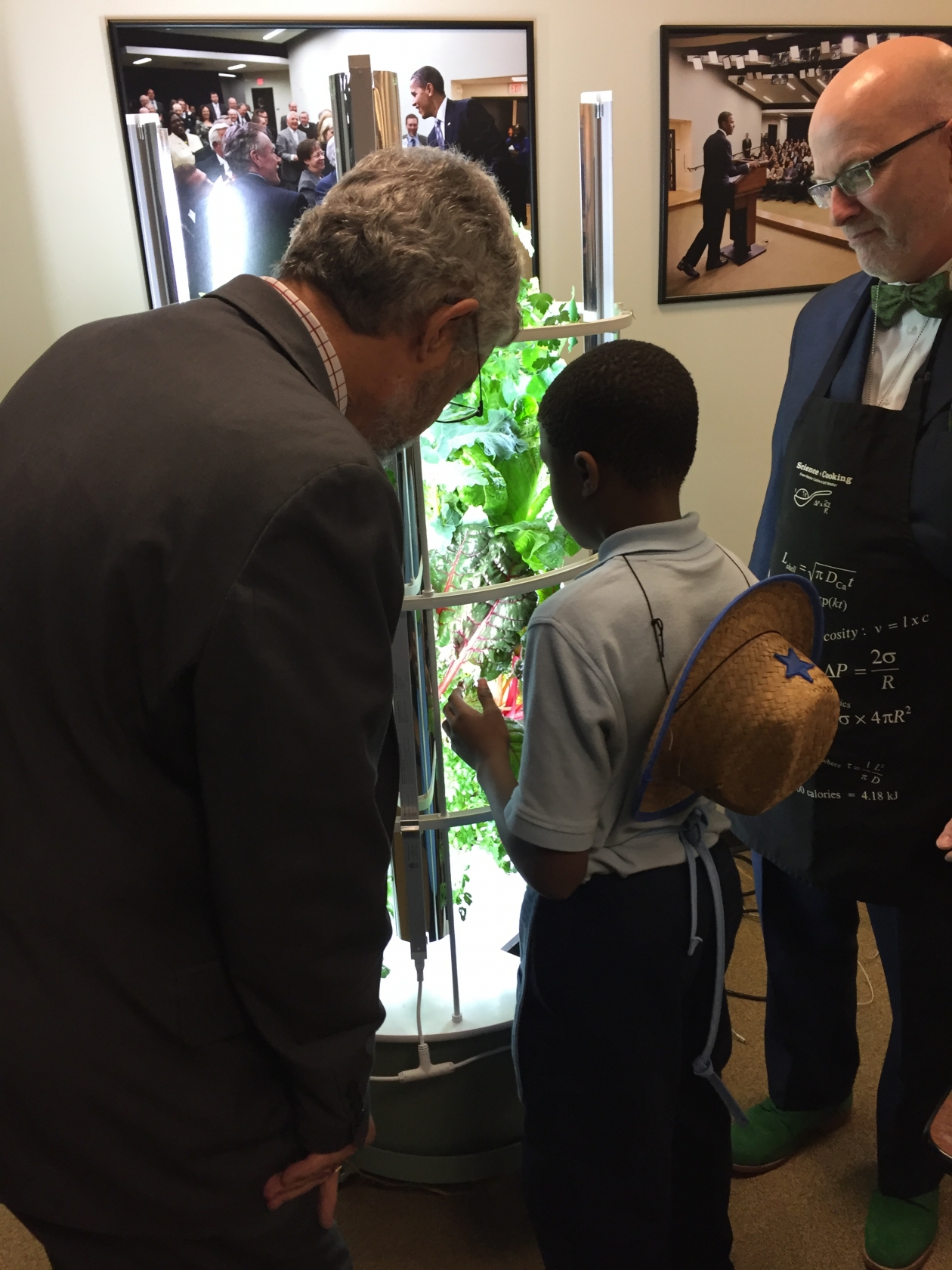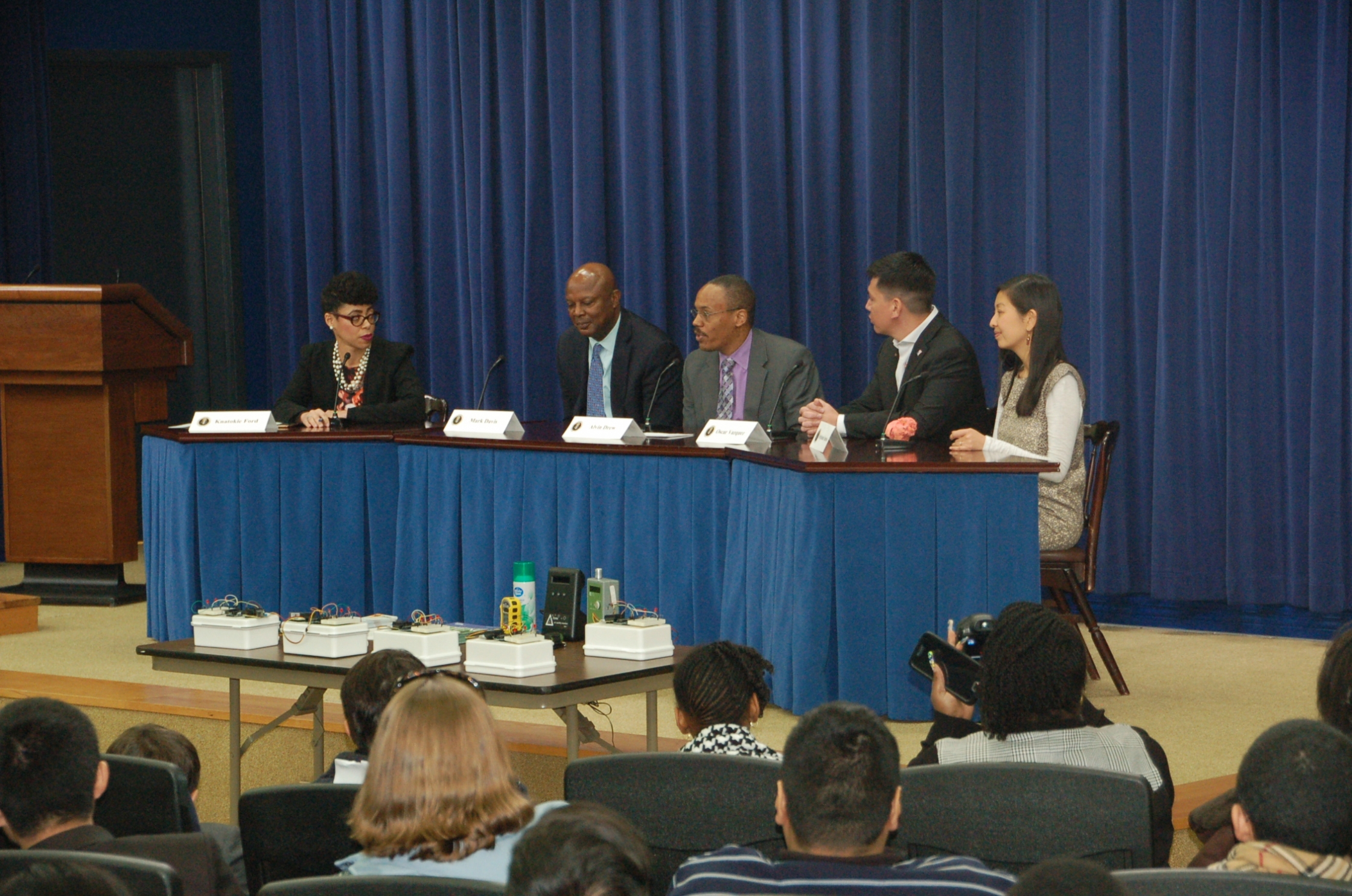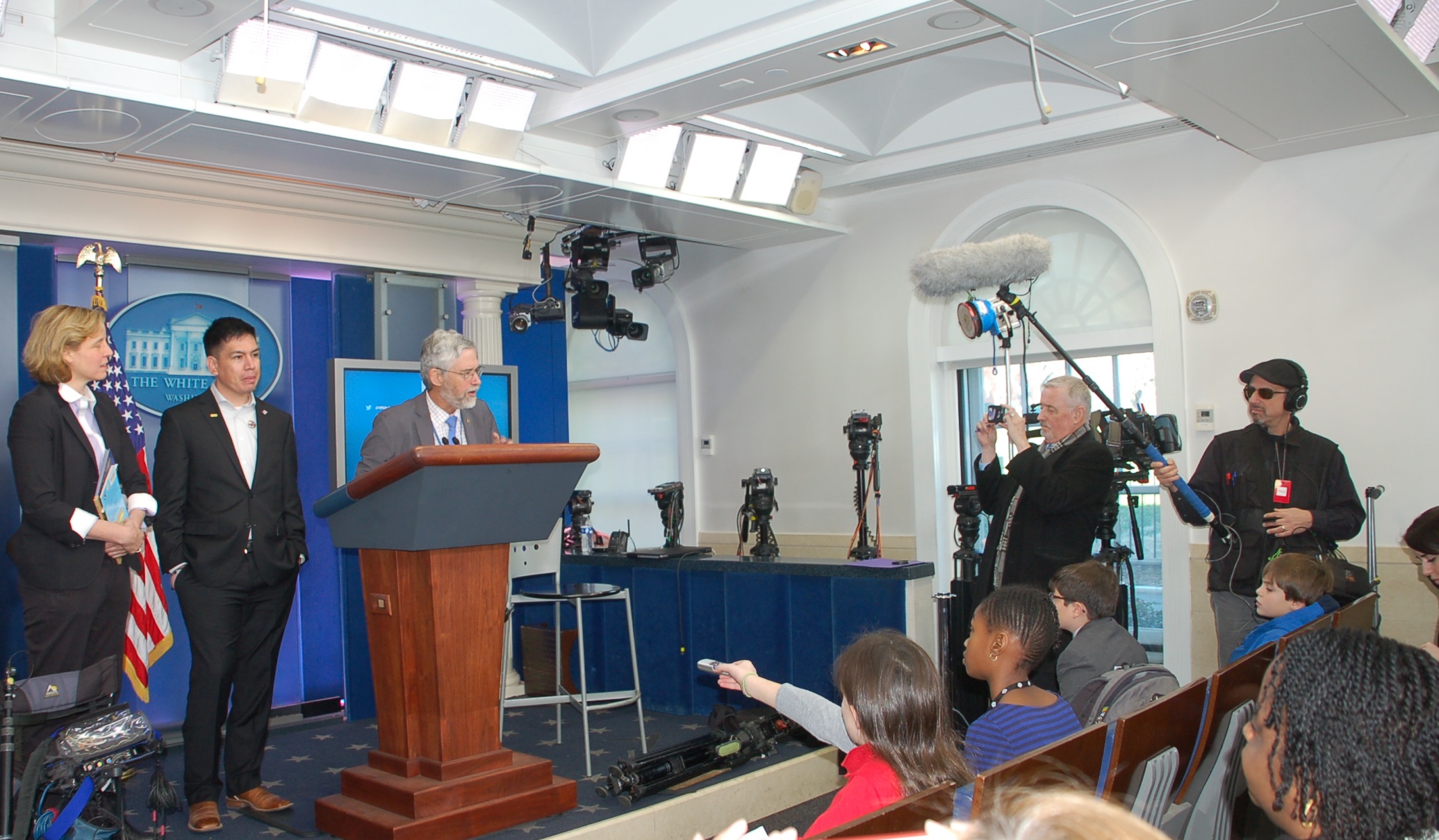
Last week, the White House invited more than 130 of the brightest, most ambitious future innovators, mathematicians, engineers, and explorers – all elementary to high school students – to attend its fourth annual State of Science, Technology, Engineering, and Math (SoSTEM) event.

The students were welcomed with a host of interactive exhibits from the Environmental Protection Administration, which exhibited and demoed an air quality sensor, as well as the National Institute of Health, which engaged students in a discussion of the role of 3D printing in the medical field and presented them with interactive 3D printed hearts and a 2-foot scale model of DNA.
Students also had the opportunity to drive a model of NASA’s Mars Rover (over their classmates) and get up close and personal with Neptune and Jupiter thanks to the Smithsonian National Air and Science Museum’s 4-foot high globe that modeled each of the planets. The National Oceanic and Atmospheric Administration was also in attendance, exhibiting rain gauges installed across the country, including in the White House garden.
After the students were able to put their knowledge of robotics, space, and engineering to the test, President Obama’s Advisor for Science and Technology and Director of the White House Office of Science and Technology Policy (OSTP), Dr. John P. Holdren, kicked-off the formal event. Dr. Holdren discussed the pivotal role STEM and its students have to play in our Nation’s future, reiterating what President Obama expressed in his State of the Union Address the night before, and concluded by emphasizing the need to sustain technological and scientific advances through students’ own collaboration, ideas, and questions.
The students also heard from a panel of STEM advocates and leaders that answered questions about their careers and bestowed advice about entering STEM fields. The panelists were a testament to the creativity, opportunity, and diversity of jobs present in STEM, and included current small business owner, Mark Davis; Alvin Drew, former astronaut and current Assistant Director for Space and Aviation Security at OSTP; Oscar Vazquez, a veteran and STEM leader; and Stephanie Santoso, Senior Advisor for Making at OSTP.

Vazquez recalled getting involved in STEM in high school when he had an opportunity to take an underwater robotics class. Though he lacked many of the traditional resources necessary to compete, he was not deterred; stripping pipes and other materials from his home, Vazquez and his team completed a robot (which they named “Stinky,” due to the unpleasant odor of the glue used in the building process) and ultimately lead his team to victory over many universities, included the highly lauded Massachusetts Institute of Technology’s robotics team. Vazquez’s early passion and innovation for robotics enabled him to attend college, where he received a degree in education.
Drew, a former astronaut, similarly reported that he overcame many hurdles before becoming an astronaut and encouraged students to “have faith in [their] abilities” and follow their passions. The other panelists offered similar advice and, in particular, encouraged students to not shy away from combining liberal arts and STEM studies.
Megan Smith, U.S. Chief Technology Officer, echoed the panelists’ advice as she encouraged the students to harness the power of data, innovation, and tech as they continue to “dive in” to their passions.

The event concluded with a live Q&A with scientists from the National Science Foundation stationed at the South Pole, who answered questions about everything from their research, daily life in Antarctica, and what they like about STEM. “It takes you to great places!” one scientist replied, motioning to the icy landscape behind him. Nods of approval and applause filled the room. And, with that, another successful State of STEM came to a close.
Fae Jencks is a Senior Policy Advisory for Public Engagement for the White House Office of Science and Technology Policy.
Isabelle Styslinger is a Communications Intern for the White House Office of Science and Technology Policy.

